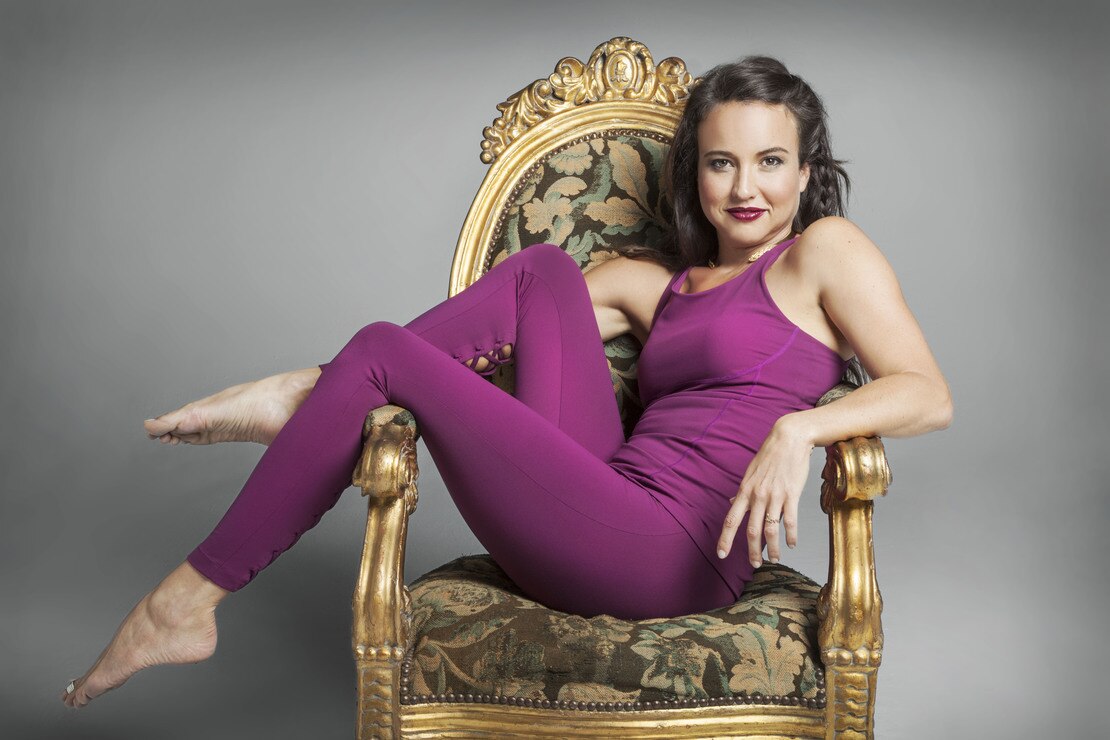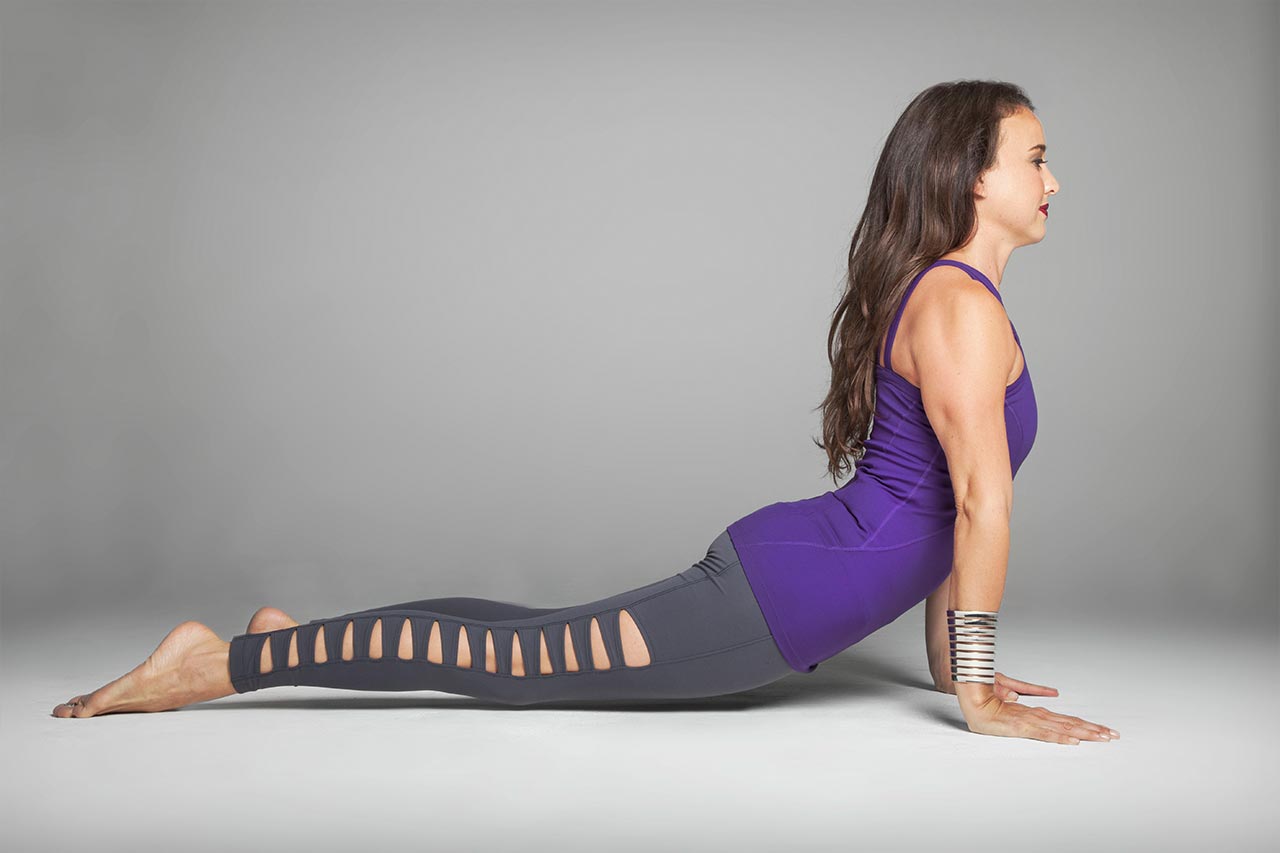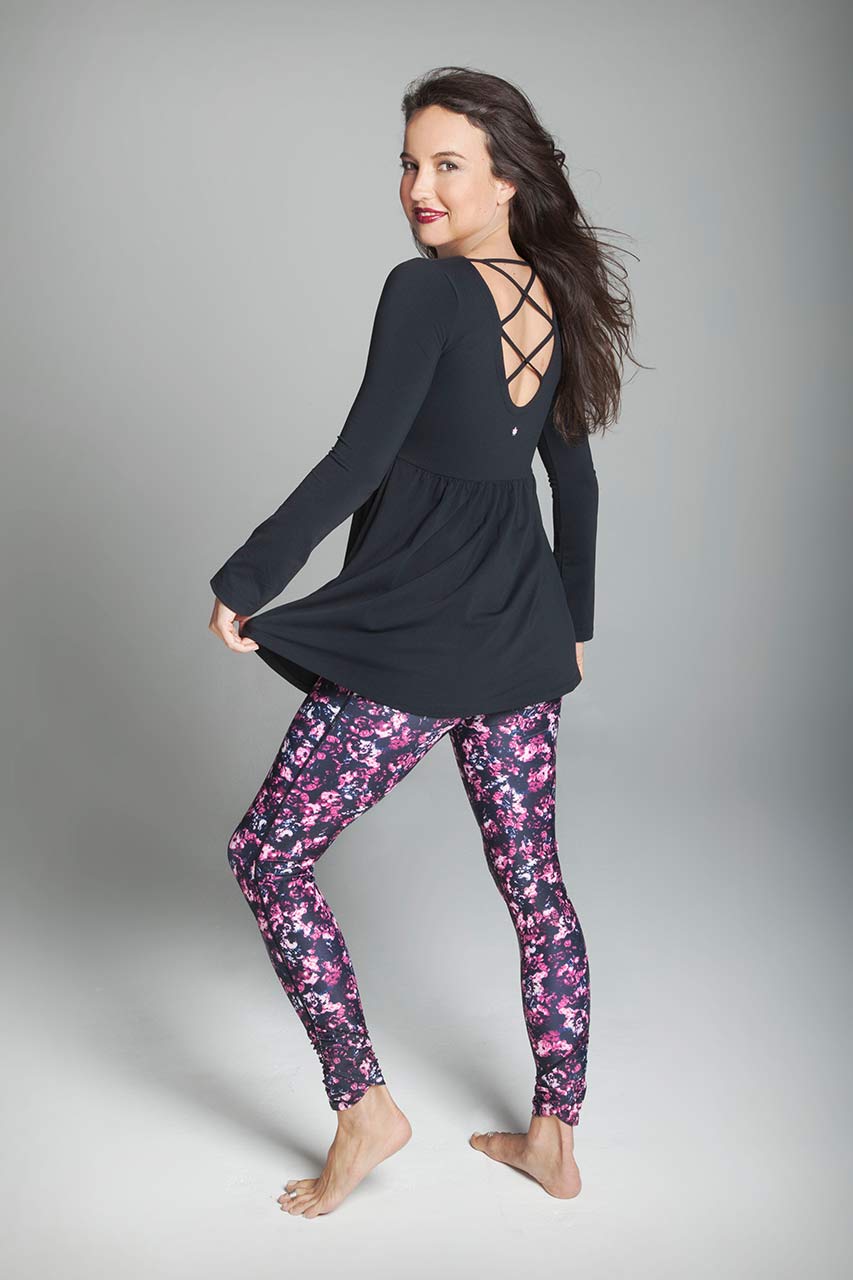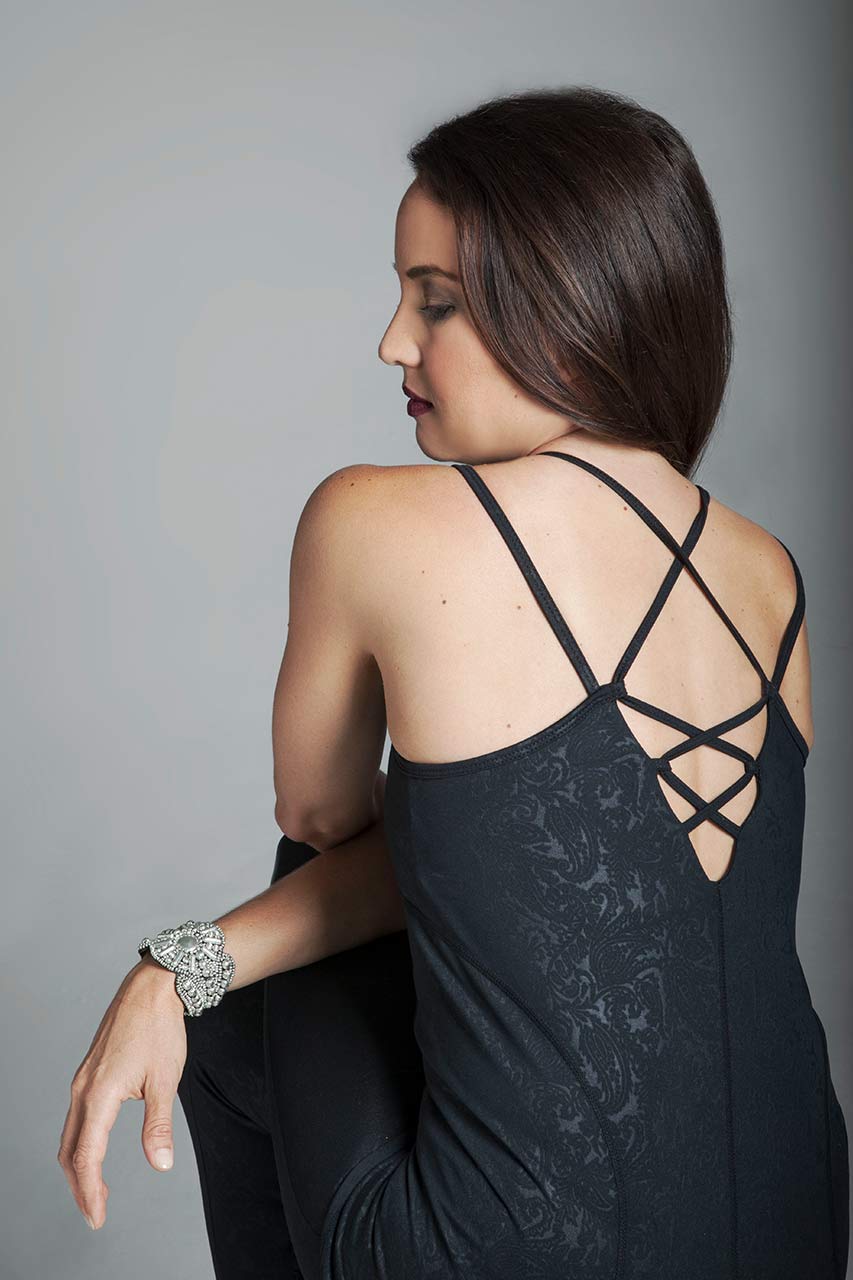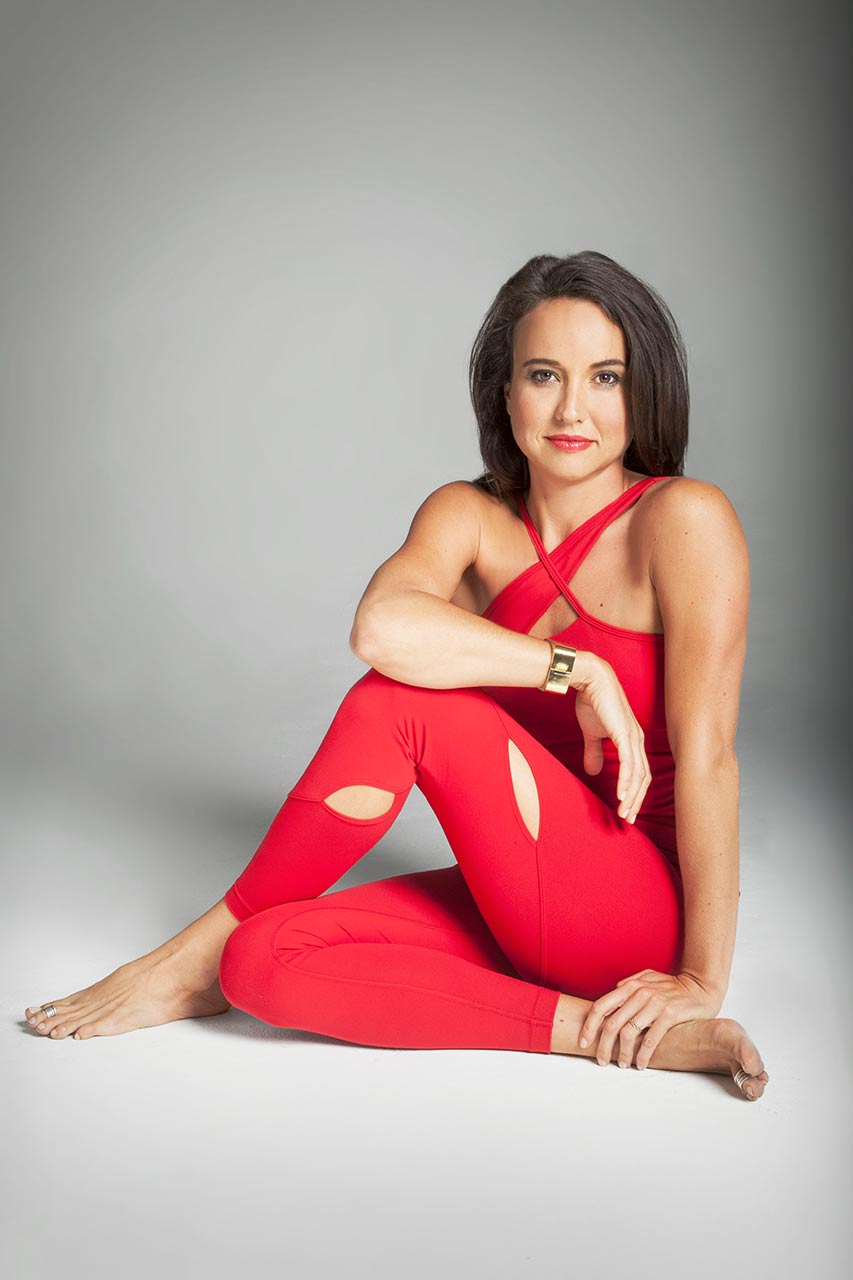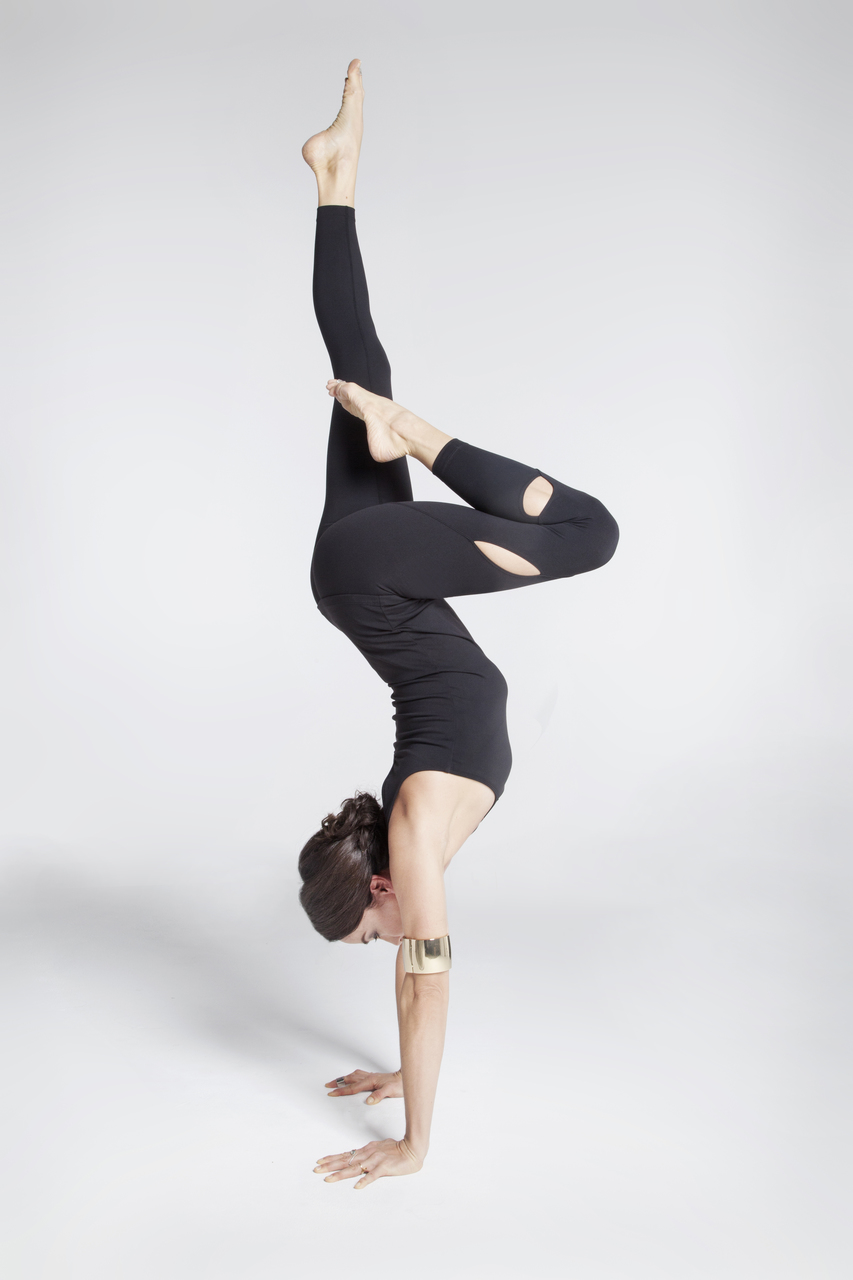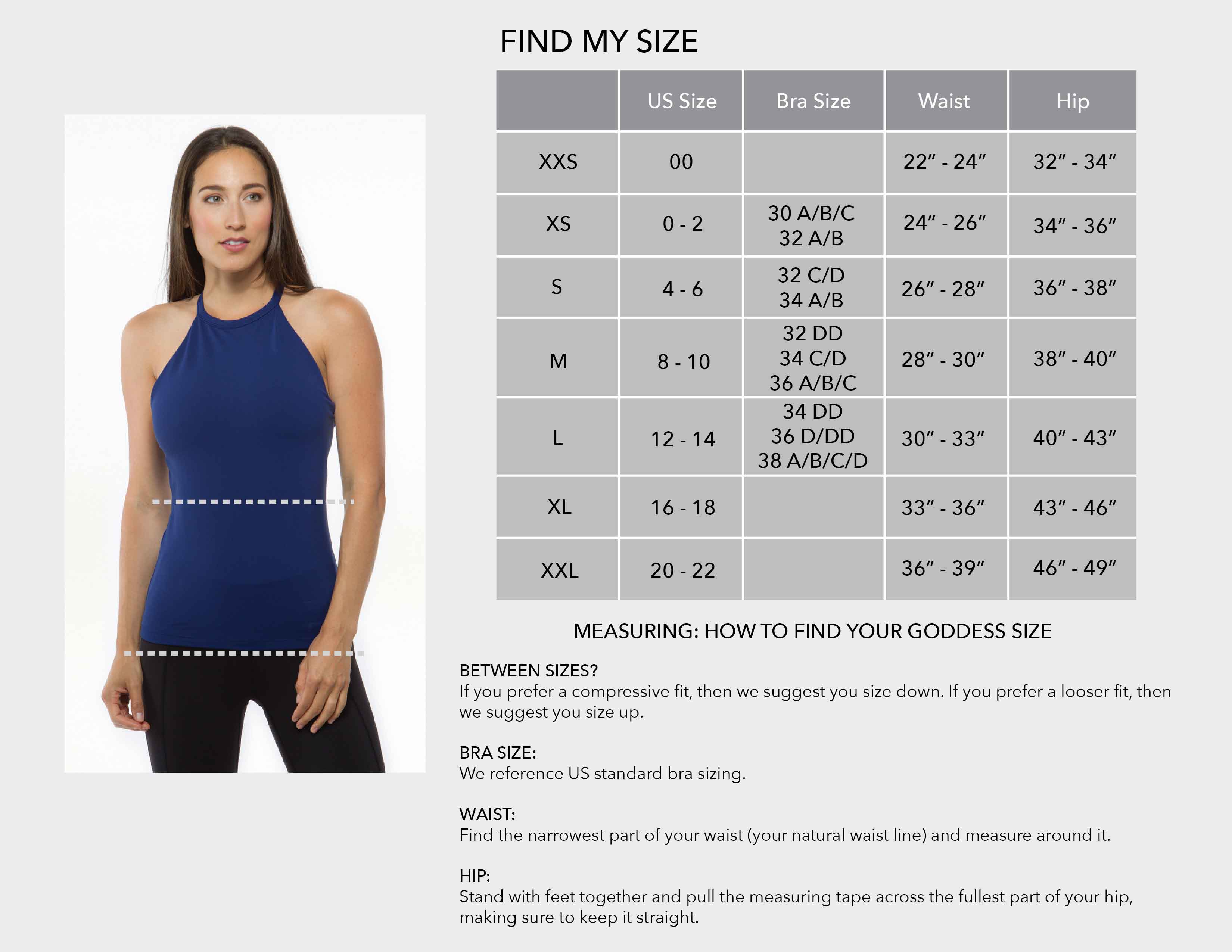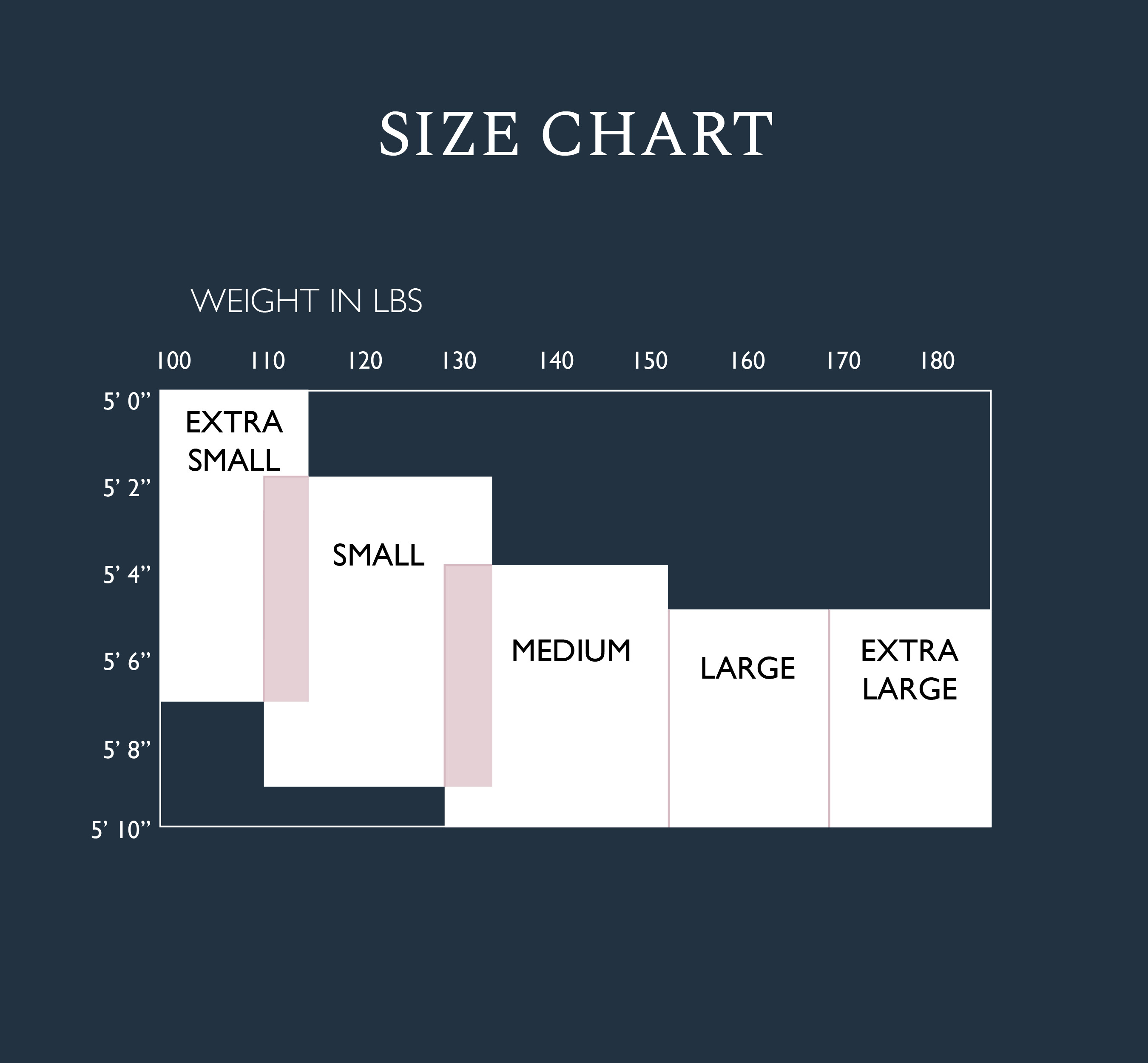
Tiffany Cruikshank: Mind Over Matter
"As women, yoga has the capacity to teach us the art of self-acceptance. We learn to free ourselves of the judgement that we are only one dimensional. We find we can be both smart and sexy. Strong and kind. Thoughtful and determined. That the power of our femininity is closely connected to being unapologetically ourselves." â Yoga Medicine with Tiffany Cruikshank
Bold and beautiful, smart and sexy, we love tapping into the many intricate layers that make Tiffany Cruikshank, Tiffany Cruikshank. An internationally acclaimed yoga instructor, author and health and wellness expert, Tiffany is passionate about living life to the healthiest and fullest, and she travels around the world inciting others to do the same. With the combination of her extensive yoga and holistic medicine training along with her captivating personality, she makes yoga and overall health not only approachable but fun. Her passion for yoga as medicine inspired her to found Yoga Medicine, an organization with a global vision to make medicine and health through yoga more accessible to all. She has a particular gift for fusing eastern and western medicine together and applying it to our experience of yoga for optimal health. In this interview, she's shares with us her expertise on finding your happiest and healthiest self through exercise, meditation, and the power of the mind:
KiraGrace: We know you focused a lot on spine health in your teachings recently. What are your top three recommendations for spine health for the everyday woman?
Tiffany Cruikshank: Well the first thing is that posture is everything. Your head weighs about ten pounds and even just having your head an inch forward increases that tenfold⦠Everything that happens in your neck affects everything down, so I think just being aware of the positioning of your head⦠Even just tipping forward an inch increases the pressure. Standing upright, you have about 70 pounds of pressure on your disks, so as soon as you start to lean your head forward even just an inch or two, that increases to about a hundred and fifty pounds... And your eyes are on the front of your head so everything you do is in front of you, everything on your computer, what you hold, what you carry... So everyone from office workers to mothers carrying kids or students carrying books, we all end up in this [sticks neck forward] position. Even with things like lower back pain, the head position is so crucial. So just being aware of that, of where your head sits, it takes a lot of pressure off the neck and lower back.
The second thing for the spine health is, when we look at things one of the most common things that people have problems with in their spine is the discs. You see a lot of either degeneration or herniated discs, and for the health of the discs itâs just simple movements that really hydrated them. Itâs one of the few parts of the body that has no innervation by the blood vessels, and so in order to heal and repair it needs to be hydrated through really small movements. That can be really gentle twists, it doesnât need to be deep movements, but really small movements. It might be sitting at your desk and kind of extending and flexing your spine a little bit while youâre sitting there or simply rotating to one side. Small movements help them actually soak up fluids and the nutrients around them that otherwise they wouldnât have⦠And for the last recommendation, I would say is, when you wake up in the morning your discs have actually expanded because theyâve soaked up fluids, and so when you exercise in the morning itâs really important to warm up slowly and be gentle and let your body start to recirculate... I think weâve all experienced this at night when you go to exercise, you feel more and you donât need as much warmup. You need more of the cool down to prepare you for sleep. In the morning, you need the warmup but you donât need as much cooldown because you want to be revved up for the day. So itâs kind of just being aware of those thingsâ¦. Especially for runners, if you ever end up getting calf or foot problems, what happens is the blood comes in so quickly that it expands faster than the fascia can catch up, and so you end up with shin splits or planters fasciitis and things like that just from too much too quick... Even just five minutes of walking and then light jogging makes a big difference.
KiraGrace: What is the ideal amount of exercise a woman should aim to get every week assuming that her time is limited? Whatâs the first thing to prioritize?
Tiffany: This is a hard thing, and I think itâs something that all women struggle with. I donât think that thereâs one right answer for everyone, and thatâs the hard thing about it. Everyone has this idea that going out and doing higher intensity workouts for longer periods of time is going to be better. But nowadays, weâve got these quicker high intensity workouts, and for some people those work really well. But then I also see a segment of people who are runners or endurance athletes who do that and donât respond. Sometimes relaxing, even mellow types of yoga, can stimulate their weight loss and the regulation of their metabolism. Itâs so important. This is where for me the yoga comes in is the mindfulness of being able to ask yourself, Okay whatâs the difference between what I think is best for me and whatâs actually best for me? How do I feel afterwards? Am I drained, am I energized? How is my metabolism responding over the weeks and the months? There is a healthy balance for everyone in doing too much or too little. If you donât have time, even just ten minutes - if thatâs relaxation or high energy, high intensity workouts - even just ten minutes of any of those things will be more helpful if you do it regularly than going and doing it for an hour and a half once a week. No matter what it is, I think the regularity is the important thing. So many people feel like what they have to do is a full hour and a half or whatever that might be⦠That's what we see a lot in yoga now, so much changing and evolving to meet our needs and I think thatâs important. For me with Yoga Medicine the biggest thing is finding ways that are not just feeding our boredom but also feeding our bodiesâ needs to be healthy. Sometimes we crave that intensity because we think we have to push ourselves harder to get more... But a lot of people are shocked when they realize that sometimes things like restorative yoga helped their metabolism. It really depends on the person. To me, yoga is the clarity of being mindful of thatâ¦. I don't mean the yoga practice, but to me the yoga is the mindfulness. To be truthful with ourselves and ask ourselves, what do I need versus what do I think I need versus what the magazines tell me I need⦠Actually thatâs my next book coming out, too is that â
KiraGrace: That was my next question! If you had any more books of your own in the works!?
Tiffany: Segue! So my next book coming out in April is on meditation for weight loss. Itâs all about that missing link. So many people think that they have to eat less or eat differently or exercise more intensely when the mental aspect itself is a huge part. The way we see ourselves, the way we believe in ourselves, and also the way relaxation affects the nervous system, metabolism, cortisol, our sympathetic nervous system - it affects us on so many levels and is really such a huge part of that. In the book, we also get into how we see ourselves, our self worth, and our body image, and how that directly affects the nervous system and how it goes to work to maintain that belief in ourselves... We have the ability to shift our metabolism based on our mindset too.
KiraGrace: Was there anything in particular that inspired you to write about this topic?
Tiffany: Iâve worked with patients for a long time on optimizing their health. My first book, Optimal Health focuses on diet, nutrition, and yoga. I found a lot of things that were really helpful there, but then I found this whole layer of people who didnât respond to even that. People who had been dieting and doing these things, eating really well, trying really hard and doing all of the right things, even checking their thyroid and their digestion⦠and not finding it. They actually came to me with the idea of doing a book on mediation for weight loss and at first I was a little like err⦠It sounded very superficial to me. But then I started thinking about it and I was like, you know, I really love this idea of coming back to the depth of health from another perspective. Iâve seen that in my patients - the meditation as a huge missing link - and I think itâs really important for people to have that aspect because it gets overlooked so easily. The research tells us there is a lot in the mind, and meditation can affect the metabolism on a very physiologic level.
KiraGrace: Meditation is a word everyone knows, but what does it actually mean and how does one meditate?
Tiffany: Thatâs one thing we talk about a lot. I come from a very Christian and conservative background, so I think meditation has a really spiritual context to some people but it really doesnât need to. Itâs about your mental state. For some people that can be spiritual or religious, and that's great if that works for you. Use that. Meditation is like exercise for the brain. Being able to focus better, being able to be present with the people you love. We know how much it affects our health, our stress levels, our organs, and our sleep. Itâs such a big part of that. But thereâs not one way to do it. So [in the book] we go through a bunch of different techniques. The big thing is looking at it from different angles to see what works for one person because there are so many different ways out there but thereâs not one way that works for everyone. You have to find it, itâs a tool. You have to find one that allows you to drop into that spaciousness.
KiraGrace: So if someone had never once meditated before what kind of guidance would you give her?
Tiffany: The biggest thing is you are trying to become an observer because we've become so interactive in our lives. The easiest example is with parents - as a parent, you see your kids making mistakes that youâve made and you want to get involved, you want to interact, you want to tell them yes or no, especially when they get older. Itâs really hard to simply be an observer. This happens in our lives all the time. Itâs really difficult for us to see something and not get involved. Meditation is the act of being able to observe and see clearly without having to change anything. If your breath is choppy, itâs choppy. You take the reactionary part of the mind out of it in order to see more clearly.
KiraGrace: So meditation doesnât necessarily mean go spend ten minutes in your room and be still? Itâs more of just a daily awareness?
Tiffany: Well it is. The idea is that the practice of actually sitting to meditate allows you to be able to incorporate that in your everyday life. A lot of styles will teach you to meditate while you wash the dishes. Meditation can be everything, but I think you need that time of sitting to train the brain to be able to do that. But people think you need like 30 minutes to an hour. I learned meditation when I was sixteen, and the place that I studied required you to meditate for two hours a day. I hated it. It turned me off to it - I mean I was 16! So I didnât do it for a while after that. Then eventually I came back to it a few years later and did a ten day silent retreat where you meditate for about eight hours a day. It taught me how to meditate really easily then. Now Iâm like, oh, a half hour, whateverâ¦
KiraGrace: We know you love grabbing anatomy books in your free time. What are you currently reading?
Tiffany: Iâm reading a really good book right now, itâs called The Anatomy of an Illness... It was written a while ago about a man who had a really serious illness, and the doctors gave him very little time to live. And he was like, I'm not so sure about that, Iâm going to cure myself. So he looked up all this stuff, and he didn't think it wasn't good to be in the hospital, that being around all these sick people was bad for him. He said, I need a better attitude, I need to get my immune system up. So he had the nurses bring him in comedy movies, so he would laugh every day. He got his doctor to give him all this Vitamin C. Anyway, it was just interesting the way he cured himself through placebo really. How much our mind really affects our healing - what a doctor would call placebo which is funny because we have a negative connotation of placebo. But placebo is the mind/body connection, thatâs yoga.
KiraGrace: What are the differences between what you think about now when youâre teaching a class versus what you were thinking about when you first started teaching?
Tiffany: Well when I first started teaching I was really worried about pleasing everyone in the room and doing something that was helpful for everyone. I had high expectations for myself, but also I know that thereâs a very diverse class and everyone has different needs - some people have back pain, some people have hip pain, some people want to exercise and lose weight and some people want to have fun - and so I'd really try to make a class that everyone would like. Now Iâm really focused on ways to get people into their body in a way that might not be specifically what they need for whatâs going on right now, but it helps them to learn a deeper awareness in the practice. For me the biggest thing is having a purpose to why youâre practicing. Whether thatâs shaking off your day and moving around or very specific anatomical alignment to help stabilize the side joints, it just depends on what weâre focusing on. Even if someone doesnât have side joint problems, they learn about the mechanics to get there and maybe prevent it⦠So that's the biggest difference now is I think about how to make the class better because I want to make it the best and clearest possible.
KiraGrace: As the upcoming holiday season approaches, do you have any holiday survival tips?
Tiffany: For the holidays, the hard thing is we get in this all or nothing mentality. Weâre either going to eat really well all the way through and stay away from all the cookies, the alcohol, the fun stuff, and all that. Then at the end of it we don't feel like we really celebrated. Or we dive right in and we enjoy and indulge, and at the end you feel awful and you do all this extreme detoxing. The big thing is moderation. Let yourself have fun, but remember that at any moment you can come back to health. All you have to do is get a really simple, clean dinner and get your smoothie in the morning. Enjoy and have some fun, but know that you can always come back to health.
KiraGrace: Why do you wear KiraGrace? What is your favorite item right now?
Tiffany: I love that Kira's line is timeless and classy but still edgy and fresh. I have many KiraGrace pieces and I can never get rid of them because they really stand the test of time.
The Seva Legging was designed in partnership with Tiffany to celebrate the warrior spirit. Bold, fearless and iconic. The 2015 Warrior Collection also aims to give back.
A percentage of every purchase of the Tiffany Seva Legging will be donated to support three months of care for a child in need through Yoga Medicineâs India Seva Project. âIâm really excited to wear this new design andto see peopleâs response but Iâm even more excited to see the effect that it can have on so many peopleâs lives on the other side of the world,â said Tiffany Cruikshank, founder of Yoga Medicine. âOur project in Calcutta is one that is close to my heart and as a yogi it feels crucial to me to be able to pass on this gift of empowerment through education to these children.â
The Yoga Medicine Nabadisha Project will support the day-to-day operation of street kids shelters, preventing the trafficking of kids ages 4-15 living in the slums and red light districts of Kolkata. The shelters provide healthcare, education, nutritional meals, tutoring, job coaching, yoga classes and other recreational activities for over 525 children. Our funds will be used towards teacherâs and supervisorâs salaries, accounting, programming, transportation, and educational materials. To learn more visit us here.
Shop the Warrior Seva Tiffany Legging
If you liked this blog, check out our other blogs like: "5 Smart is Sexy Looks: Tiffany Cruikshank's Collection Inspiration," " Peace of Mind: Q&A with Tiffany Cruikshank," "Bold & Beautiful: Kathryn Budig's Collection Inspiration," and "What is the Difference Between Yoga Pants & Leggings?."
